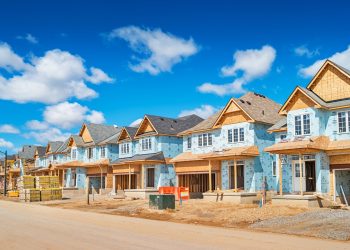As stalled negotiations over the sweeping federal Build Back Better bill appear to be regaining some momentum, one change championed by the real estate industry might be off the table this time around as Democrats navigate a narrow path to pushing a revised piece of legislation through congress.
The state and local income tax deduction, or SALT deduction, allows families to deduct taxes paid to their state and local governments from their federal liability, including property taxes. Currently capped at $10,000, the original Build Back Better text raised the cap to $80,000—a change that was supported by many legislators, as well as the National Association of REALTORS® (NAR).
But new reports suggest that change might be off the table as the Democratic caucus attempts to win the support of both moderate and progressive members.
An NAR spokesperson tells RISMedia the organization is still “advocat for Congress to find a solution on SALT relief.”
“The limit on SALT deductibility has made buying and owning a home much more difficult for millions of Americans,” the spokesperson says. “With record low inventory and rising prices, now is the worst time to reduce tax incentives that have long been available to help make homes more affordable for buyers.”
The SALT change is most important to areas with high state and local taxes—mostly New England states, California and Atlantic coastal areas, and primarily benefits high-income families, according to the non-partisan Tax Foundation. A write-off for high earners who live in these places (a $1 million home in Hartford, Connecticut comes with a $50,000 annual property tax bill) is often a tremendous boon, and proponents of raising the cap have argued it makes investing in expensive properties more attractive.
At the same time, progressive Democrats have pushed back on the change, arguing that it will exacerbate already rampant income inequality, while others have worried it would increase the federal deficit.
Candace Adams, President & CEO of Berkshire Hathaway HomeServices New England Properties, tells RISMedia that the change, “must happen as far as I’m concerned.”
“The migration to no tax states has been significant and reinstating the deduction will help to stabilize the region,” she says. “The notion that it is for the uber wealthy has no basis, as each high taxpayer leaving the states takes with them a large sum of tax money. It absolutely impacts everyone.”
Ryan Raveis, co-president of William Raveis Inc., which also boasts a large footprint in real estate, mortgage and insurance in those highly-taxed Northeast markets, called the SALT deduction “an issue of fairness.”
“The SALT deduction limitation also presents an economic issue that puts these states at a competitive disadvantage to states with low tax/low benefits,” he tells RISMedia. “It’s essentially a federal surcharge on the highest taxed states, and it dampens the real estate market and the wealth creation generated from an asset that is often a person’s largest—their home.”
Whether the SALT cap change is truly off the table remains unclear, and any revival of Build Back Better is still in the very early stages of negotiations. Republicans have remained broadly opposed to the legislation, which originally included a bevy of housing provisions championed by NAR and other housing advocates.
Speaking back in October when the initial legislative framework was announced (sans any mention of SALT), NAR chief advocacy officer Shannon McGahn promised to keep lobbying for the change.
“We won’t let down our guard on SALT and are still hopeful for a solution,” she said at the time.
 Jesse Williams is RISMedia’s associate online editor. Email him your real estate news ideas to jwilliams@rismedia.com.
Jesse Williams is RISMedia’s associate online editor. Email him your real estate news ideas to jwilliams@rismedia.com.












